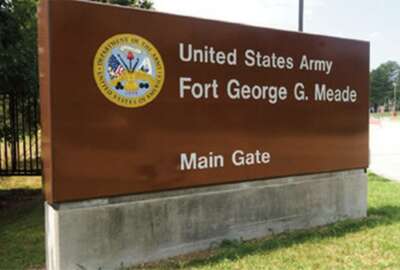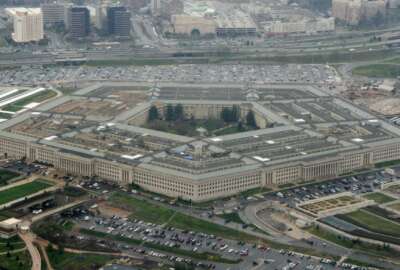DoD rolls out new process to reduce coronavirus travel restrictions
The Defense Department is moving toward a "conditions-based" approach to reducing the travel restrictions it put in place in response to COVID-19.
The Pentagon on Tuesday began work to gradually unwind the global travel restrictions that have been in place for its military and civilian personnel for the past two months, moving toward a new methodology for relaxing travel bans that officials said would be “phased” and “conditions-based.”
Defense Department officials said they would begin lifting the global stop movement order on a geographic basis, starting in locations where there are clear signs that the spread of coronavirus has slowed.
The Pentagon said some places already meet its new criteria to resume “unrestricted travel,” and that the travel ban for those places could be lifted as early as Tuesday evening. Officials have not yet publicly identified those locations.
In general, however, officials said they would rely heavily on assessments by state and local health officials, along with the Centers for Disease Control. In order to resume travel to or from a particular spot, DoD will look to factors such as whether local officials have lifted stay-at-home orders, and whether new COVID-19 cases have been on a downward trajectory for at least 14 days.
“While the COVID-19 pandemic still presents an overall risk to our service members, civilians and their families, varying conditions across the nation warrant this transition to a tailored approach,” said Matthew Donovan, the undersecretary of Defense for personnel and readiness. “We’re tracking it by state, by territory, by host nation. And the service secretaries and combatant commanders will track it at the installation level.”
Read more: Defense News
That latter group of assessments — by the military services and combatant commanders — will look at other factors in order to decide whether travel restrictions to or from a particular base can be relaxed. Those include whether military treatment facilities have enough capacity to treat patients, whether bases have the space to quarantine personnel who might be arriving from coronavirus hotspots, and whether a location has adequate testing capacity.
In any case, DoD’s existing stop movement orders will still apply unless the traveler in question is planning to leave from — and arrive at — locations that have been approved for unrestricted travel. Donovan’s office plans to track those locations in Advana, an internal DoD data analytics system, but officials said they would also announce them publicly at regular intervals, perhaps weekly.
Also on Tuesday, the department published a new phased reopening plan for what’s known as the “Pentagon Reservation,” the D.C.-area offices that include the Pentagon itself and other leased and DoD-owned facilities like the Mark Center in Alexandria, Virginia.
Much like DoD’s phased approach to loosening travel restrictions, the plan for the National Capital Region will depend on whether COVID cases among employees in D.C., Maryland and Virginia have been headed downward for at least 14 days in a row.
Lisa Hershman, DoD’s chief management officer, said there has indeed been a downward trend amongst the Pentagon workforce, but it’s only lasted eight days so far. If and when that trend sustains itself for at least 14 days, the Pentagon will move into the first of four planned phases of reopening its D.C.-area facilities.
In “phase one,” 60% of the workforce would still be expected to telework. Those that return to Pentagon offices would be expected to wear masks whenever they can’t socially distance from coworkers, and gatherings of more than 10 people would still be banned.
If there’s no evidence of a rebound and coronavirus cases are still headed downward after another two weeks, the Pentagon would move onto the next phase, which includes a goal of 20% of employees teleworking. Employees would still be expected to wear masks, but gatherings up to 50 people would be allowed.
The restrictions would continue to abate over the subsequent weeks if infection rates are still headed downward, until the Pentagon reaches “phase 4,” or normal operations. However, there are other considerations DoD will have to take into account before moving into each new phase, such as whether the area’s Metrorail system is operating with enough capacity to take employees to and from work, and whether schools or daycare facilities have reopened to care for employees’ children.
But even once the department returns to “normal,” it’s quite possible the Pentagon will still have many more teleworkers than it did before the pandemic, Hershman said. As of now, some Pentagon workgroups — particularly those who can do their jobs without accessing classified networks — have reached telework rates of 90% or more.
“We’ve encouraged each of the leadership to think about what makes sense,” she said. “In my organization, we did some performance management tracking, and we have some individuals who have actually been more productive. So we’re looking at what makes sense in terms of being able to complete the mission.”
Copyright © 2024 Federal News Network. All rights reserved. This website is not intended for users located within the European Economic Area.
Jared Serbu is deputy editor of Federal News Network and reports on the Defense Department’s contracting, legislative, workforce and IT issues.
Follow @jserbuWFED






